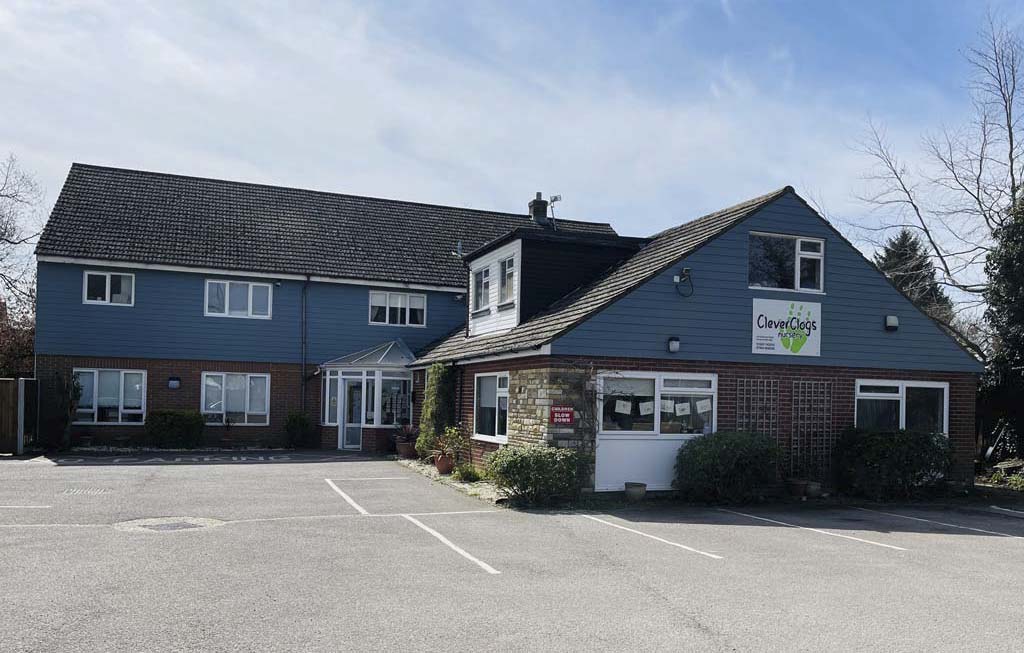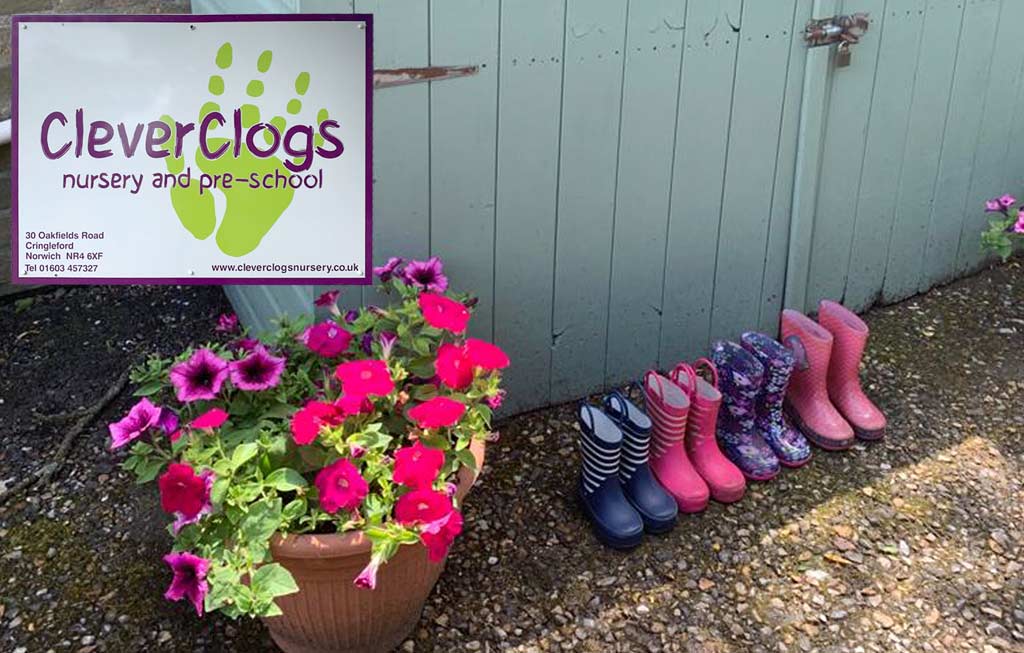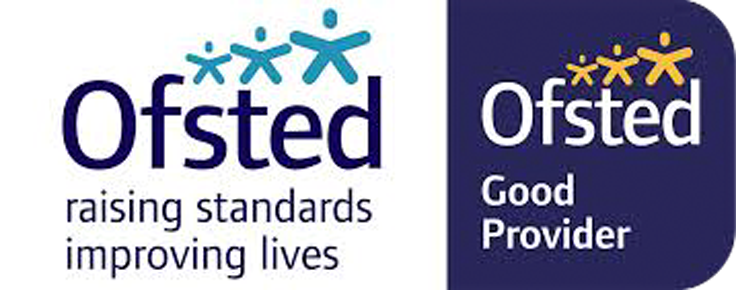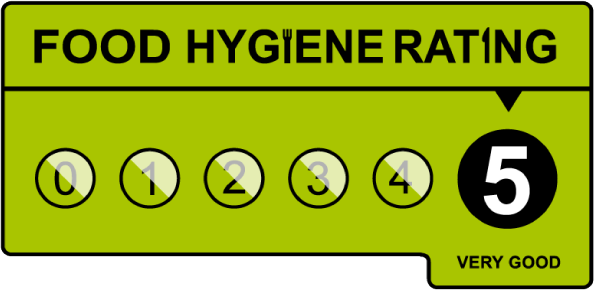CleverClogs Nursery and Pre-school
Safeguarding Children Policy
Policy Statement
Our setting is committed to safeguarding and promoting the welfare of the children within our setting; we will work with children, parents and the community to ensure the rights and safety of children and to give them the very best start in life. Our safeguarding policy is based on the three key commitments of the settings Safeguarding Children Board.
Confidentiality
- All of the staff paid or unpaid ensure that they maintain confidentiality at all times, and only share the information with those that need to know in order to keep the children safe and protected, in line with the referral process.
- All suspicions and investigations are kept confidential and shared only with those who need to know. Any information is shared under the guidance of the Local Safeguarding Children Board.
- All of the information gathered on the children is kept in a locked cupboard and only authorised people have access to the information.
- Lastly all the staff sign a confidentiality agreement, stating that they understand the term ‘confidential’ and that they will adhere to the agreement.
Roles and Responsibilities
- All of the staff paid or unpaid have a duty of care within our setting towards safeguarding the children. We have Designated Safeguarding Lead Practitioners.
- Our Safeguarding Lead Practitioners have the responsibility to co-ordinate child protection issues. If they are absence then the person in charge takes responsibility.
- Our safeguarding officer who oversees this work is the nursery proprietors.
Staff, volunteers, parents and visitors
- We ensure all staff and are made aware of our safeguarding policies and procedures. On their induction they read and adhere to our safeguarding policies and our staff safeguarding pack.
- We ensure that we record the details of visitors to the setting, and when they are working in the rooms with the children they are not left unsupervised.
- We take security steps to ensure that we have control over who comes into the setting so that no unauthorised person has unsupervised access to the children.
- As a setting we believe it is key to work in partnership with the parents/carers, and ensure that all parents/carers are aware of our safeguarding policy.
- The safeguarding policy is available for anyone to read.
- We have a duty of care poster within our setting as well as flow chart for referrals, which is displayed on the main notice board for staff, parent/carers and visitors.
- As a setting we share information with parents/carers regarding any accidents or injuries that happen whilst at our setting, which will be recorded on an accident or incident form for the parents to read and sign. We expect the parents/carers to inform us of any accidents or injuries that may have happened at home, if these accidents/injuries are significant or re-occurring they would be recorded on a body mapping form and stored in our safeguarding file, in order to insure the safety of the child/ren.
- We make clear to parents our role and responsibilities in relation to child protection, such as for the reporting of concerns, providing information, monitoring of the child, and liaising at all times with the local children’s social care team.
- We will continue to welcome the child and the family whilst investigations are being made in relation to any alleged abuse.
- We follow the Child Protection Plan as set by the child’s social care worker in relation to the setting’s designated role and tasks in supporting that child and their family, subsequent to any investigation.
- Confidential records kept on a child are shared with the child’s parents or those who have parental responsibility for the child in accordance with the Confidentiality and Client Access to Records procedure and only if appropriate under the guidance of the Norfolk Safeguarding Children Board.
Safer Recruitment
- Applicants for posts within the setting are clearly informed that the positions are exempt from the Rehabilitation of Offenders Act 1974.
- Candidates are informed of the need to carry out ‘Enhanced Disclosure’ checks with the DBS before posts can be confirmed.
- Where applications are rejected because of information that has been disclosed, applicants have the right to know and to challenge incorrect information.
- We abide by Ofsted requirements in respect of references and DBS checks for staff and volunteers, to ensure that no disqualified person or unsuitable person works at the setting or has access to the children.
- We abide by the Protection of Vulnerable Groups Act requirements in respect of any person who is dismissed from our employment, or resigns in circumstances that would otherwise have lead to dismissal for reasons of child protection concern.
- For the requirement process please refer to the Employment, Staffing and safer Recruitment Policy.
The Nursery is committed to promoting awareness of child abuse issues throughout its training and learning programmes for adults. It is also committed to empowering young children, through its early childhood curriculum, promoting their right to be strong, resilient and listened to.
Training
- We seek out training opportunities for all staff involved in the setting to ensure that they are able to recognise the signs and symptoms of possible physical abuse, emotional abuse, sexual abuse and neglect and that they are aware of the local authority guidelines for making referrals.
- All training is updated regularly to keep knowledge up to date.
- We ensure that all staff know the procedures for reporting and recording their concerns in the setting.
Planning
- The layout of the rooms allows for constant supervision.
Curriculum
- We introduce key elements of keeping children safe into our programme to promote the personal, social and emotional development of all children, so that they may grow to be strong, resilient and listened to and that they develop an understanding of why and how to keep safe.
- We create within the setting a culture of value and respect for the individual, having positive regard for children’s heritage arising from their colour, ethnicity, languages spoken at home, cultural and social background.
- We ensure that this is carried out in a way that is developmentally appropriate for the children.
The Nursery is committed to responding promptly and appropriately to all incidents or concerns of abuse that
may occur and to work with statutory agencies in accordance with the procedures that are set down in ‘Working
together to safeguard children’ (2018)
Abuse and neglect
‘A form of maltreatment of a child. Somebody may abuse or neglect a child by inflicting harm, or by failing to act to prevent harm. Children may be abused in a family or in an institutional or community setting by those known to them or, more rarely, by others. Abuse can take place wholly online, or technology may be used to facilitate offline abuse. Children may be abused by an adult or adults, or another child or children.’ Working together to safeguard children (2018).’
- We acknowledge that abuse of children can take different forms - physical, emotional, and sexual, as well as neglect, all of the staff within this setting are aware of the various types of abuse and the different signs and symptoms that they present.
Physical abuse
- May involve hitting, shaking, throwing poisoning, and burning, scalding, drowning, suffocating or otherwise causing physical harm to a child. It may also be when a parent/carer fabricates the symptoms of or deliberately induces illness in a child.
Emotional abuse
- This is when the child suffers emotional maltreatment which over time causes adverse effects on a childs emotional development. It can involve conveying to a child that they are worthless, unloved or inadequate. It may include not allowing the child to express themselves or making fun of their views. Preventing a child from taking part in social activities. It can involve seeing or hearing ill-treatment of others or bullying, which causes them to feel frightened or in danger. It is important to remember that some level or emotional abuse is involved in all types of maltreatment however, it can also occur alone.
Sexual abuse
- This is when a child is forced to take part in sexual activities, whether or not the child is aware of what is happening. These activities may involve physical contact such as penetration, or non-penetrative acts such as masturbation, kissing or rubbing. Sexual abuse can also involve non-contact activities such as making them watch sexual activities, or sexual images as well as grooming the child in preparation for abuse.
Neglect
- This type of abuse is the persistent failure to meet a child’s basic needs such as not providing them with adequate food, clothing and shelter. Not protecting them from physical or emotional harm. Keep them aware from danger, not accessing appropriate medical care and treatment when need and also being un responsive to a child’s emotional needs.
The process we follow if there is a concern raised about a child
- All of the staff within the setting are aware of the signs and symptoms of abuse and the various types of abuse that a child may be suffering from.
- When children are suffering from physical, sexual or emotional abuse, or may be experiencing neglect, this may be demonstrated through the things they say (direct or indirect disclosure) or through changes in their appearance, their behaviour, or their play.
- Where such evidence is apparent, the member of the staff makes a dated record of the details of the concern, care is taken not to influence the outcome either through the way we speak to children or by asking questions of the children.
- The information is then discussed with the safeguarding officer. If it is felt that a referral would need to be made then the appropriate channels are (see appendix 2 for referral chart) taken based on the ‘what to do if you are worried a child is being abused’ (2018)
- Before a referral is made the first point of call would be the parents to inform them that we are going ahead with a referral based on a suspicion on abuse, unless to do so would put the child at risk of harm.
- A referral form from the Norfolk Safeguarding Children Board (see appendix 3) would be filled in with the child’s information, address and detailed account of the information observed or communicated by the child as well as background information regarding the child and their family.
- We would then keep a copy of the information in our safeguarding file and the original would be sent to Children’s Advice and Duty Service (CADS) 03448 008021.
Liaison with other agencies
- We work within the Local Safeguarding Children Board guidelines.
- We have a copy of ‘What to do if you’re worried a child is being abused’ for parents and staff and all staff are familiar with what to do if they have concerns.
- We have procedures for contacting the local authority on child protection which is via CAD's 03448 008021.
- We notify the registration authority (Ofsted) of any incident or accident and any changes in our arrangements, which may affect the wellbeing of children. Ofsted: 0300 1231231.
- Contact details for the local National Society for the Prevention of Cruelty to Children (NSPCC) are also kept. 08088 005000.
- If a referral is to be made to CAD’s, we act within the area’s Safeguarding Children and Child Protection guidance in deciding whether we must inform the child’s parents at the same time.
Allegations against staff
- We ensure that all parents know how to complain about the behaviour or actions of staff or volunteers within the setting, or anyone living or working on the premises occupied by the setting, which may include an allegation of abuse. The referral flow chart is displayed on the main notice board.
- We follow the guidance of the Local Safeguarding Children Board when responding to any complaint that a member of staff, or volunteer within the setting, or anyone living or working on the premises occupied by the setting, has abused a child.
- All staff are aware of what constitute inappropriate behaviour, such as inappropriate sexual comments, excessive one to one attention beyond the requirements of their role and inappropriate sharing of images. If any staff member feels that another staff member is displaying in appropriate behaviour we have a ‘whistle blowing policy’ which allows staff to express any allegations they may have about a member of staff (see whistle blowing policy).
- If there was an allegation that was made against a staff member we would follow the whistle blowing policy.
- We refer any such complaint immediately to the local authority’s designated officer (LADO 01603 223473) to investigate. We also report any such alleged incident to Ofsted (03001 231231) and what measures we have taken. We are aware that it is an offence not to do this.
- We co-operate entirely with any investigation carried out by children’s services in conjunction with the police.
- Where the management and children’s services agree it is appropriate in the circumstances, the Proprietor will suspend the member of staff on full pay, or the volunteer, for the duration of the investigation. This is not an indication of admission that the alleged incident has taken place, but is to protect the staff as well as children and families throughout the process.
Disciplinary action
- Where a member of staff or volunteer has been dismissed due to engaging in activities that caused concern for the safeguarding of children or vulnerable adults, we will notify the Independent Safeguarding Authority (ISA 0300 1231111) of relevant information so that individuals who pose a threat to children (and vulnerable groups), can be identified and barred from working with these groups.
E safety (cameras, mobile phones, video cameras and social networking sites)
- Our setting works together with parents carers and visitors to ensure that children are protected from them misuse of cameras, mobile phones, video cameras and social networking sites.
- When a child/ren are enrolled at our setting consent forms are sought from the parents/carers stating that they are happy for the nursery to use photos of their child which may include images of other children for displays around the room, Tapestry account and for the nursery website. Parents can consent to all 3 or whichever ones they agree are suitable which is recorded on their child’s registration form.
- The staff at our setting is aware of which children have picture consent to ensure that if a parent/carer does not wish for their child to be photographed that this is adhered to.
- The setting will only store children’s photographs on equipment which is password protected.
- Under no circumstances are indecent photographs taken of the children.
- Our setting often has various events on throughout the year such as fun days and Christmas parties, when these events are occurring signs are displayed stating that no photos that are taken at the setting are allowed to be uploaded onto social networking sites. Also if any parents request that their child not be photographed at these events then all parents/carers will be unable to use photographic equipment during the event. The setting will ensure that for any children that consent is not given for photographs are not in them. The nursery will then supply photographs for the families if they request them.
- Staff are not permitted to use their own mobile phones to take photographs with.
- Staff are not permitted to have their mobile phones in the classroom. During working hours staff phones are kept locked away in the office and staff may only use them during their breaks. Any staff member that uses their phones around the child will receive a verbal warning.
- Parents/carers and visitors are not permitted to use their mobile phones in the setting when picking up their children, if a member staff sees a parent/carer on their phone they will not be permitted to enter the setting until the phone is put away.
- Staff members are informed on their induction with regards to social networking sites, that it breaches confidentiality to discuss families that access our services or befriend families who use our services, unless they are known previous to attending the services.
Procedure for a child/ren who leave the setting un-expectantly
All children who are absent from nursery will have the reason logged on the day sheets, this ensure that we are aware of why the child/ren are not attending nursery. Any child/ren that leave the setting un-expectantly where concerns have been raised about the family the safeguarding lead practitioner would contact CAD’s 03448 008021
Prevent Duty
Within our setting we follow a prevent of duty policy which is ‘a duty under section 26 of the Counter-Terrorism and Security Act 2015, in the exercise of their functions, to have “due regard to the need to prevent people from being drawn into terrorism”. (The prevent of duty June 2015).
In order to ensure that we safeguard the children within care we follow our safeguarding policy and ensure that we promote British Values within our setting through the curriculum focusing on personal social and emotional development and understanding of the world. British values are:
- Rule of Law - managing feelings and behaviours, understanding consequences and right from wrong. We support children in this area through the use of our behaviuor management policies and through using consistency with the children in order for them to understand right from wrong.
- Democracy - understanding other people’s feelings and beliefs. We observe talk to and evaluate the children’s play and thoughts throughout the nursery and use this to feed into our daily plans. For example in the baby room we observe and watch the areas they are interested in and extend upon this. We ask the older children what interests them and extended their learning. Within the preschool room the children are given free choice and a child centred approach in the planning.
- Individual Liberty and Mutual Respect - to develop self-knowledge, self-esteem, confidence and take safe risks- we work with our children through the use of circle time and register times to listen to and respect each other. The preschool room has a show and tell box and throughout the nursery we actively promote the children’s work and achievements. There are lots of images and languages around the nursery that promote the world we live in.
- Tolerance of different faiths and beliefs - this focuses on people and communities and working together. Making relationships and respecting cultures and faiths. Our nursery celebrates lots of different festivals and celebrations and we teach our children to respect and learn about them. When families enrol within the setting we ask for them to list any special festivals that they would like to celebrate and incorporate this into our setting.
Under the Counter-Terrorism and Security Act 2015 we have a duty to refer any concerns of extremism.
Staff are alert to harmful behaviours by influential adults in the child’s life. This may include discriminatory and/or extremist discussions between parents, family and/or staff members. We take action when we observe behaviour of concern. Staff are able to identify children who may be vulnerable to radicalization, and know what to do when they are identified. We assess the risk of children being drawn into terrorism, and work in partnership with local partners such as the police, Prevent Co-ordinators, Channel Police Practitioners and their LSCB, to take account of local risks and respond appropriately. We are able to make referrals to local Channel Panels, Channel Police Practitioners or the LSCB, if there are concerns that an individual may be vulnerable to being drawn into terrorism or extremism
We can talk in confidence about the concerns and gain advice from the Department for Education helpline (020 7340 7264) to enable staff to raise concerns relating to extremism directly.
Modern Slavery
Child trafficking and modern slavery is becoming a more frequent form of child abuse. Children are recruited, moved, transported and then exploited, forced to work or are sold on.
Modern slavery is a term that covers:
- Slavery
- Servitude and forced or compulsory labour
- Human trafficking
Victims of modern slavery are also likely to be subjected to other types of abuse such as physical, sexual and emotional abuse.
For an adult or child to have been a victim of human trafficking there must have been:
- Action (e.g. recruitment, transportation, transfer, harbouring or receipt of a child for the purpose of exploitation)
- Means (threat or use of force, coercion, abduction, abuse of power or vulnerability) There does not need to be “means” for children as they are not able to give informed consent
- Purpose (e.g. sexual exploitation, forced labour or domestic servitude, slavery, financial exploitation, illegal adoption, removal of organs).
Procedure: When a concern is raised about slavery or trafficking then we will follow our above safeguarding procedure. If the child (or adult) is at risk of immediate harm then the police will be called, otherwise the local authority will be contacted and the referral process will be followed.
Safeguarding also links to these policies outlined below and can be found within the policy and procedure policy:
Confidentiality
Equal opportunities
Administering medication
Behaviour management
Compliments and complaints
Failure to collect children
Children who go missing
E-safety
Accidents and incidents
Whistle blowing
Procedures for staff discipline
Emergency evacuations
Intimate care
Admissions
Safer recruitments
Key person
Planning
Parental partnerships
Legal framework
Primary legislation
- Children Act (1989 s47)
- Protection of Children Act (1999)
- Data Protection Act (1998)
- The Children Act (Every Child Matters) (2004)
- Safeguarding Vulnerable Groups Act (2006)
Secondary legislation
- Sexual Offences Act (2003)
- Criminal Justice and Court Services Act (2000)
- Human Rights Act (1999)
- Race Relations (Amendment) Act (2000)
- Race Relations (Amendment) Act (1976) Regulations
- Equalities Act (2006)
- Data Protection Act (1998) Non Statutory Guidance
Further Guidance
- Working Together to Safeguard Children (revised HMG 2020)
- What to do if you’re Worried a Child is Being Abused (HMG 2015)
- Framework for the Assessment of Children in Need and their Families (DoH 2000)
- The family support plan (2014)
- Statutory guidance on making arrangements to safeguard and promote the welfare of children under section 11 of the Children Act 2004 (HMG 2007)
- Information Sharing: Practitioners’ Guide (HMG 2006)
- Independent Safeguarding Authority: www.isa-gov.org.uk
- Norfolk Safeguarding Children Board www.lscb.norfolk.gov.uk
- CADS
CleverClogs
Longwater
441 Dereham Road New Costessey
Norwich NR5 OSG
Click here for CleverClogs Longwater


CleverClogs
Cringleford
30 Oakfields Road Cringleford
Norwich NR4 6XF
Click here for CleverClogs Cringleford



